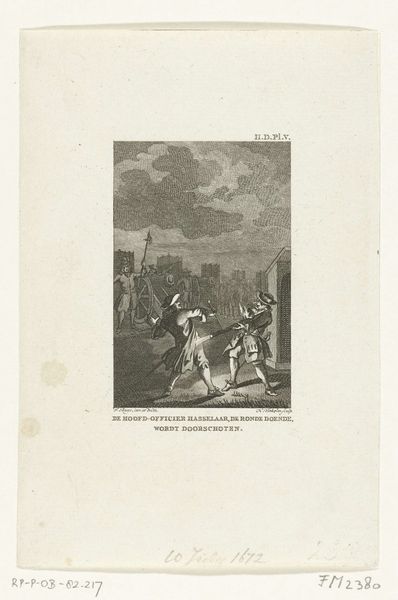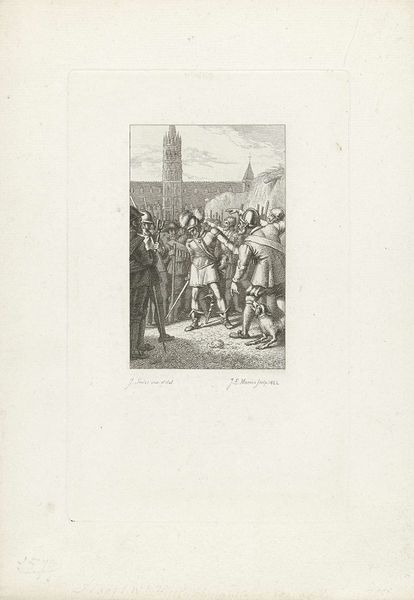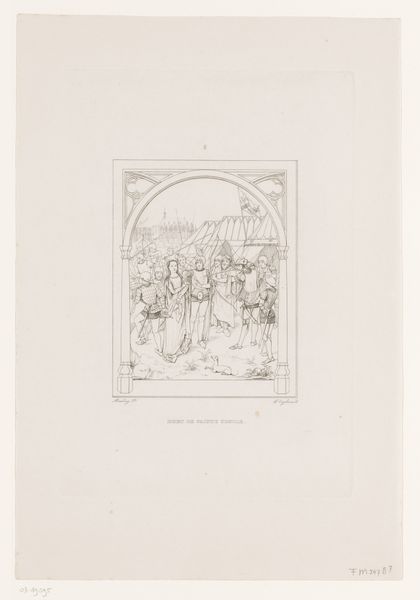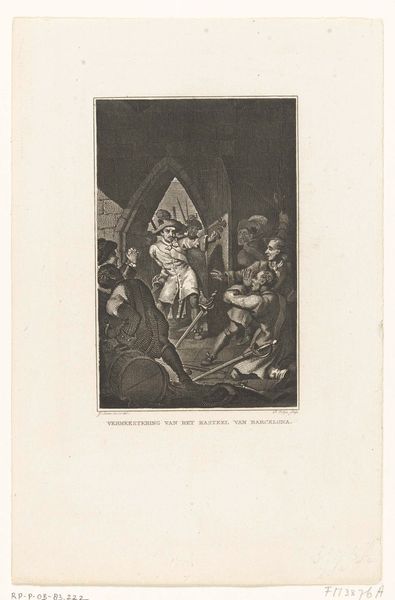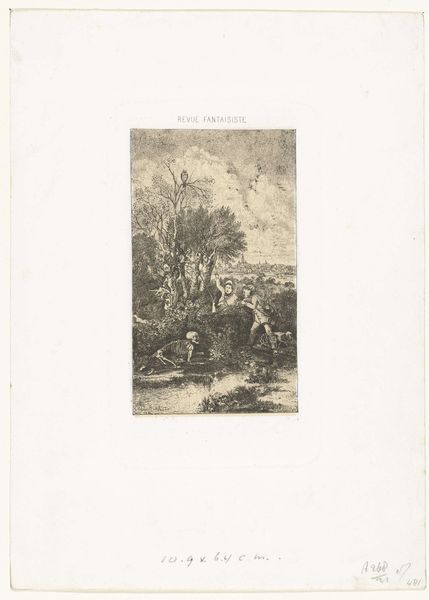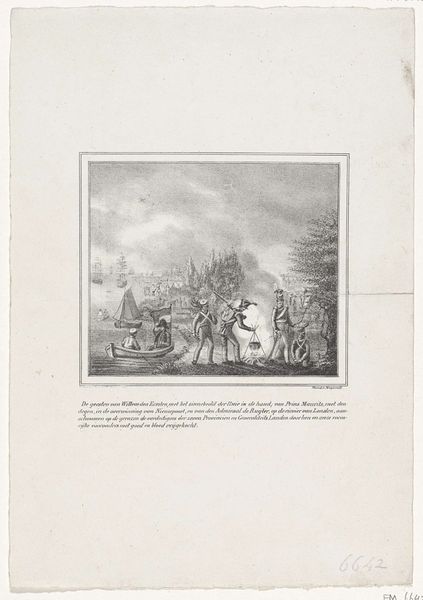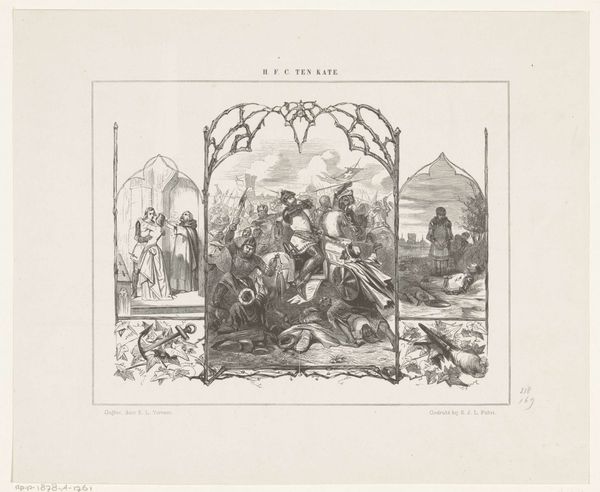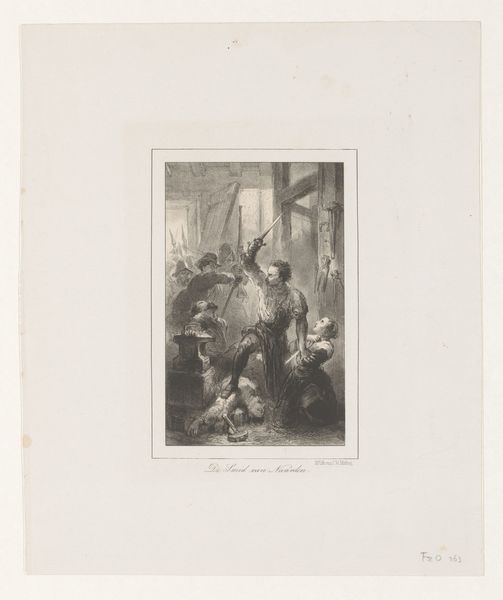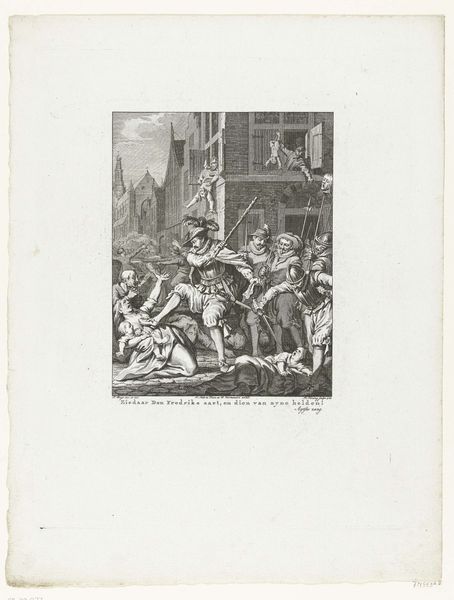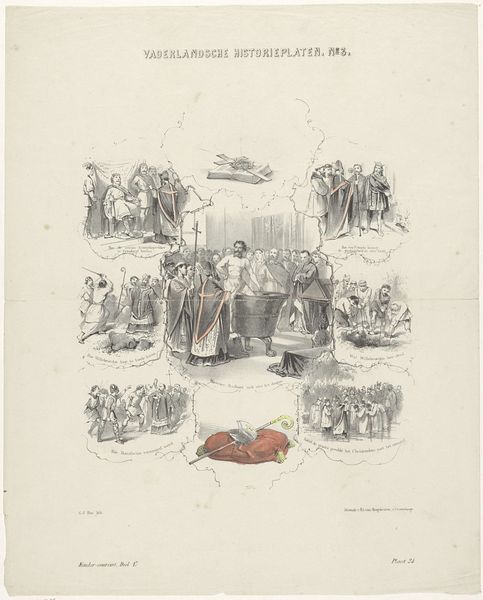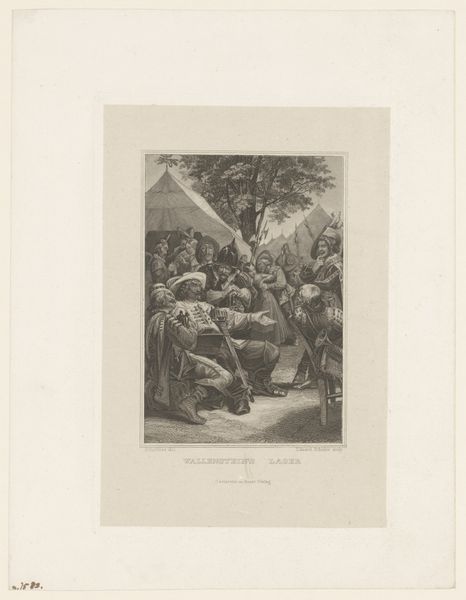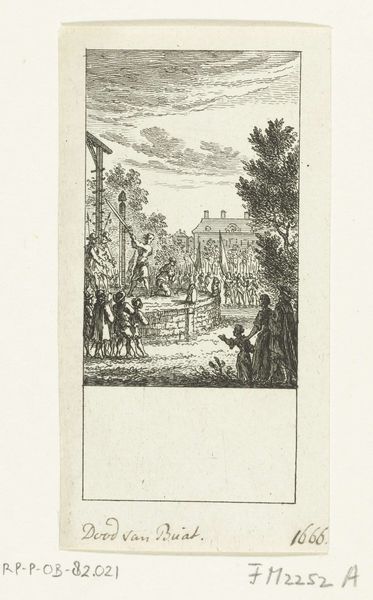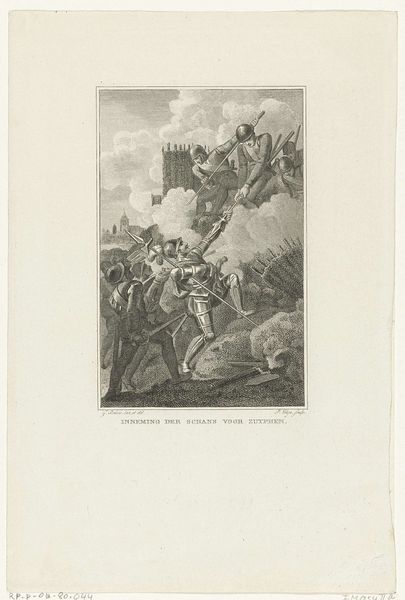
drawing, ink, pen, engraving
#
drawing
#
comic strip sketch
#
medieval
#
narrative-art
#
old engraving style
#
figuration
#
personal sketchbook
#
ink
#
idea generation sketch
#
sketchwork
#
ink drawing experimentation
#
pen-ink sketch
#
sketchbook drawing
#
pen
#
history-painting
#
storyboard and sketchbook work
#
sketchbook art
#
engraving
Dimensions: height 219 mm, width 157 mm
Copyright: Rijks Museum: Open Domain
Charles Onghena made this print, "Voorval te Gent: een vader door zijn zoon onthoofd, 1371," in the 19th century. It depicts a father being beheaded by his son in Ghent in 1371. The print offers a glimpse into the cultural fascination with historical events and moral lessons during the 19th century in Belgium. Onghena uses the print to create meaning through visual codes and historical associations. Made during a period of burgeoning nationalism, Onghena’s work evokes medieval history, a time when regional identities were being forged. The choice of this grim subject matter can be understood within the context of 19th-century historical painting, which often depicted dramatic or morally instructive scenes from the past. Understanding this print requires historical research into the production and consumption of historical imagery in 19th-century Belgium. By exploring the social and institutional contexts of Onghena’s work, we can better understand its meanings and significance.
Comments
No comments
Be the first to comment and join the conversation on the ultimate creative platform.
